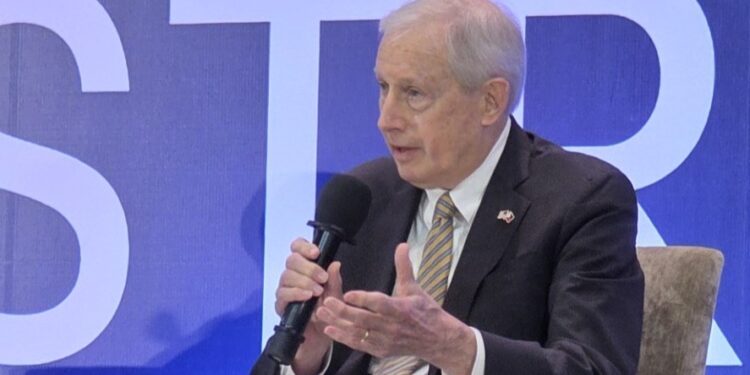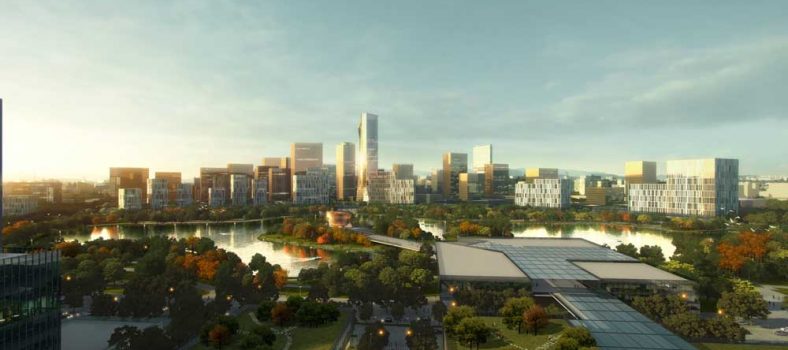21st Century Infrastructure Panel Presentation
By Executive Director Hank Hendrickson
September 9, 2025
The Manila Strategy Forum
Thank you for the opportunity to join this important Strategy Forum Panel on Infrastructure. Infrastructure is the foundational grid that keeps people and products on the move, enables us to communicate with neighbors and across the globe, sustains educational systems, delivers energy, and protects human health, national security, and the environment. In simplest terms, infrastructure can help speed us through synchronized traffic lights, while faulty infrastructure leads to gridlock. In short, a well-ordered society rests on a responsive foundation of broad and overlapping networks of physical, technical and social infrastructure.
As a result of its demography and geography, the Philippines’ infrastructure needs are shaped by factors, including rapid urbanization, demands of a younger population eying mobility into an energy-consuming middle class life-style with cars, home appliances and air conditioning, the expectations of a business community serving domestic and international markets, and increased vulnerability to climate change and natural disasters.
Philippine infrastructure requirements and priorities today are being addressed by national government policies and programs, together with robust input from the private sector, and drawing on international financing and expertise. Philippine infrastructure spending in the past decade has improved from three percent to five percent. However, actual construction of flagship projects has lagged, owing to a restricted level of activity during the Covid years, land acquisition challenges, and environmental concerns.
As a member of the US-Philippines Society, I would note the role of the United States in helping to develop both physical and institutional infrastructure in the Philippines going back to the beginning of the last century.
Thomasite teachers, who, as Kate Baker has written, came to the Philippines in 1901 “fortified with energy and passion,” laid the groundwork for a nationwide system of public education, and established a lasting legacy. At the same time, Governor General William Howard Taft worked with Filipino counterparts to build systems of modern governance, along with roads and ports that would stimulate the economic growth that transformed Manila into a thriving “Pearl of the Orient” during the pre-war era.
This panel was asked to assess the outlook for development assistance to the Philippines in the absence of the U.S. Agency for International Development. I look forward to responses from others here, but it would seem useful to cite a few examples of the role of USAID over the years, as we assess “post-USAID” development prospects.
Following the end of WW II, American assistance helped to strengthen Philippine infrastructure in a variety of ways. As Butch Meily, president of the Philippine Disaster Resilience Foundation, wrote recently in Fortune Magazine, USAID, “by any measure, has done an absolutely yeoman job,” feeding the hungry, combatting infectious diseases, promoting economic development and fighting poverty.
After the ravages of the war, USAID helped establish national government agencies and educational institutions, later focusing on strengthening democratic institutions. In more recent times, USAID provided ex-combatants in the southern Philippines with skills training so they could reintegrate into society. In the wake of Typhoon Haiyan in 2013, USAID rebuilt schools, clinics and water systems that enabled local businesses to get back on their feet. At the same time, it embarked on programs to strengthen the economies of cities outside of Manila to promote sustainable regional growth.
USAID’s post-World War II legacy will stand for itself and, I suspect, be judged by people here in positive terms.
More recent USAID assistance in areas of disaster preparedness and response can and will be supported, if not fully replaced, by international aid groups and multilateral institutions, along with improved national government capabilities and private sector cooperation from organizations like PDRF, and logistical assistance from the U.S. military. For example, just last month the U.S. Indo-Pacific Command dispatched Marine and Air Force planes to deliver life-saving relief items to flooded communities in Northern Luzon which were hit by consecutive southwest monsoon storms.
Programs to reintegrate former Moro guerrilla fighters remain important as a means of restoring peace in the South, especially with BARMM elections looming in October. We hope that the government can sustain reintegration programs in the absence of USAID and the highly effective work on reconciliation carried out by the U.S. Institute of Peace.
Today, even in the absence of USAID programs, America remains engaged in supporting infrastructure development in the Philippines. A signature current example is the enhancement of a Luzon Economic Corridor, where the U.S. Trade and Development Agency is partnering with the Philippine Department of Transportation to provide technical expertise related to “transportation modeling, port integration analysis, and legal and institutional planning.” The Luzon Economic Corridor connects Subic, Clark, Manila and Batangas with improved road, rail, and port facilities, speeding the flow of goods and spurring economic growth along the way in a vital area of the Philippines heartland. On a separate but related track, expansion of the Clark airport will relieve congestion at NAIA. And, Public-Private Partnership investments at New Clark City will attract business operations beyond Metro Manila.
Of course, needs for improvements in infrastructure range far beyond central Luzon. The Bangsamoro Autonomous Region of Muslim Mindanao is arguably the neediest region in the country as a result of a difficult history and decades of conflict. If the October 13th BARMM election is accompanied by strides toward peace and reconciliation, we may see a dividend, opening the way for infrastructure improvements in communications and transportation, together with business investment and agricultural development in the region.
Progress toward peace and reconciliation in the South will allow the AFP, which now deploys some 40 percent of its troops to Mindanao/Sulu, to pivot toward territorial defense requirements, and at the same time contribute to a stabilized national security environment that will further underpin international investor confidence in the Philippines. On the other hand, if the BARMM election fails to promote unity and serves only to reinforce rivalries and communal tensions in the South, progress toward a pivot and a peace dividend will be delayed. Other areas that impact investor confidence, and more importantly, the lives of the Filipino people, include:
– Effective disaster response and preparedness to ensure continuity of commercial operations and more time-on-the job for workers.
– Ensuring energy supplies to meet the needs of consumers and businesses.
– Improving health initiatives to maintain a productive workforce.
– Expanding human resources to include promoting leadership opportunities for women and drawing on the expertise of returned OFW’s, including seafarers.
Keys for progress in each of these areas include public-private partnerships and community-based solutions, especially in disaster response and public health.
And, on the critical issues of energy availability, cost, sourcing, and distribution, solutions should include upgrading resilience to allow the electrical grid to “snap-back” in the face of intensifying tropical storm patterns.
As the Philippines addresses challenges in these areas there is room for optimism. The widely recognized resilience of the Filipino people, the availability of a large and growing workforce, and the forward-looking competence of world-class business leaders, along with government policies under this and the previous administration to expand infrastructure are a formula for success in achieving solutions. This gives the Philippines capacity to forge meaningful progress on infrastructure development and gain comparative advantages as a regional partner for America in a dynamic and vital part of today’s world.
In conclusion, I would be remiss not to mention some of the contributions made by members of the US-Philippines Society.
– The Ayala Corporation’s support for public-private partnerships has led to improvements in public health infrastructure.
– Partnership with Philippine Transmarine Carriers under the Smart Development Institute has mobilized OFW’s to deploy skills in confronting natural disasters and has provided Wi-Fi connectivity to schools.
– Planate Management has introduced expertise in emerging technologies designed to improve accuracy in weather forecasting and modeling to enhance protections for infrastructure along the coast in the face of climate change.
– And, the Society’s partnership in the wake of Typhoon Haiyan supported the Washington-based Philippine Humanitarian Coalition, which has developed and financed projects to improve lives of deserving Filipinos at the community level.
Thank you for your attention and for your interest in the US-Philippines Society’s activities.


